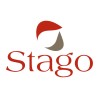
A Randomized Phase II Open Label Study to Compare the Safety and Efficacy of Subcutaneous Dalteparin...
Cancer-associated ThrombosisEsophageal Cancer9 moreThis is an open label, multi-center, and randomized phase II trial designed to compare the safety and efficacy of direct oral anticoagulants and subcutaneous dalteparin in patients with acute venous thromboembolism and upper gastrointestinal, hepatobiliary, or pancreatic cancer, based on a group sequential design. Enrolled patients will be randomized in a 1:1 ratio. Patients will be stratified by performance status, type of cancer, chemotherapy and medical centers.

Applying Pharmacogenetics to Warfarin Dosing in Chinese Patients
Atrial FibrillationDeep Vein Thrombosis2 moreThe purpose of this study is to determine whether pharmacogenetic guided dosing of warfarin is promising for the improvement of efficiency, therapeutic efficacy, and, especially, safety of warfarin therapy than a dosing regimen without the pharmacogenetic information in Chinese patients initiated on warfarin anticoagulation.

Measurement of D-Dimer Levels in Patients With Confirmed Deep Vein Thrombosis
Deep Venous ThrombosisMeasurement of D-Di (D-Dimer) levels using the in-vitro diagnostic reagent STA® - Liatest® D-Di and STA® - Liatest® D-Di PLUS in plasma samples from patients diagnosed with Deep Vein Thrombosis (DVT) Data from this study may be used in conjunction with data from the prospective study entitled "STA® - Liatest® D-Di - Exclusion of Venous Thromboembolism (VTE)", NCT01221805, the DiET study,

Prolonged Hemodialysis Catheter Survival With Copolymer Coating and Rt-PA
Malfunction; CatheterThrombosis1 moreSurface thrombogenicity of standard double lumen catheters (stDLC) and surface modified film-coated domain structured double lumen catheters (fcDLC) consisting of a novel reactive polyurethane copolymer coating showed that in vitro measured surface thrombogenicity was reduced in the modified catheter compared with standard catheter. The clinical investigation revealed that both number of days before catheter removal according to clinical requirements and number of treatments per catheter were significantly higher with the modified catheter as compared with the standard catheter. Recombinant tissue plasminogen activator (rt-PA) has been used primarily to treat catheter thrombosis. The relatively high cost of rt-PA and its theoretical potential to cause bleeding, as well as the morbidity and mortality associated with catheter malfunction and infection, justify the need for more definitive evidence of the efficacy of rt-PA as a locking solution. No study aims to evaluate the impact of rt-PA locking in long-term Hemodialysis (HD) uncuffed catheters survival.

Validation of a Novel Dabigatran Based Peri-Operative Bridging Anticoagulation Protocol for Patients...
Venous ThrombosesResearch Questions: Does using dabigatran bridging result in consistent therapeutic anticoagulation? What percentage of patients will become subtherapeutic on warfarin once dabigatran is stopped? What is the incidence of bleeding events with the use of dabigatran overlapped with warfarin for bridging? What is the cost benefit of using dabigatran instead of dalteparin for bridging anticoagulation?

VERITAS: An Evaluation of the Veniti Vidi Retrievable Inferior Vena Cava Filter System in Patients...
Deep Vein ThrombosisPulmonary EmbolusThis is a prospective, multicenter single arm, nonrandomized study that will include 150 patients at a maximum of 20 investigational sites. It is estimated that it may take 13 months to complete enrollment. Follow-up will continue through 24 months post-implant or one month post-retrieval, whichever occurs first. It is required that filters be retrieved from at least 50 patients and the filter is permanent in at least 50 patients.

Phase II Investigation of 99mTc-rBitistatin for Imaging Venous Thrombosis
Venous Thrombosis99mTc-rBitistatin is a radiolabeled polypeptide which is designed to stick to blood clots so that the blood clots can be detected by imaging. The purpose of this trial is to evaluate in patients the safety of 99mTc-rBitistatin and its ability to locate blood clots in the arms and legs.

Modeling Genotype and Other Factors to Enhance the Safety of Coumadin Prescribing
Atrial FibrillationDeep Venous Thrombosis2 moreThe study goal is to conduct a randomized controlled trial to compare safety and accuracy of dosing based on clinical information including the clinical reason for your taking coumadin, your age, gender, your body surface area, and other medical conditions you may have with dosing estimated by a dosing calculator which adjusts for factors affecting coumadin dosing variability including genotypes for genes important in Coumadin metabolism and response. The hypothesis to be tested by this trial states that:when compared to patients managed with a best practices standard-of-care coumadin dosing regimen, patients randomized to coumadin dosing based on genetically programmed metabolic capacity and other known clinical and environmental factors affecting dose will: 1)show reduced risk of adverse events (using surrogate measures of such events); and 2)more rapidly achieve Coumadin dosing.

Optimized Antithrombotic Therapy of Acute Myocardial Infarction With Left Ventricular Mural Thrombus...
Acute Myocardial InfarctionLeft Ventricular ThrombusA multi-center study will be done to explore the optimal regimen of antithrombotic therapy for acute myocardial infarction with left ventricular mural thrombus. The investigators will evaluate the different combinations of antiplatelet drugs and anticoagulants for at least one month, such as aspirin 100mg qd+clopidogrel 75mg qd+warfarin (INR1.8-2.2), aspirin 100mg qd+clopidogrel 75mg qd+dabigatran 110mg bid, aspirin 100mg qd+ticagrelor 60mg bid+warfarin (INR1.8-2.2), and aspirin 100mg qd+ticagrelor 60mg bid+dabigatran 110mg bid. Transthoracic two-dimensional echocardiography will be done at the 1-month, 3-month and 6-month follow-ups to evaluate the left ventricular mural thrombus and determinate whether the antithrombotic therapy regimen could be regulated to double antiplatelet or anticoagulant+clopidogrel 75mg qd/ticagrelor 60mg bid. Then the investigators will complete the 12-month follow-up to evaluate the efficacy and safety of the optimal antithrombotic therapy regimen for acute myocardial infarction with left ventricular mural thrombus.

The Efficacy and Safety of Dabigatran Etexilate for the Treatment of Cerebral Venous Thrombosis...
Cerebral Venous ThrombosisThis is a single-center, prospective, randomized (1:1), open-label study with two parallel groups. This study is planned to investigate the efficacy and safety of dabigatran etexilate comparing with warfarin for the treatment of cerebral venous thrombosis.
